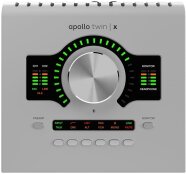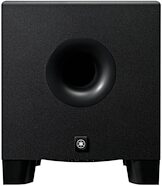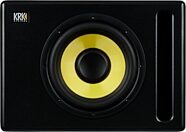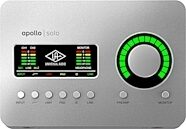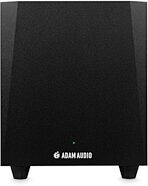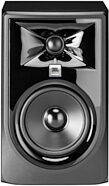
JBL 305P MKII 3 Series Powered Studio Monitor
Get the precise imaging, wide sweet spot, and reliable accuracy that JBL 305 studio monitors are known for, plus boundary EQ controls, in JBL's MKII model.
$159.00
- No Credit Check6 x$26.50
- No Credit Check4 x$39.75
JBL LSR25P Compact Powered Studio Monitor (1x5.25 in.)
No longer available at zZounds
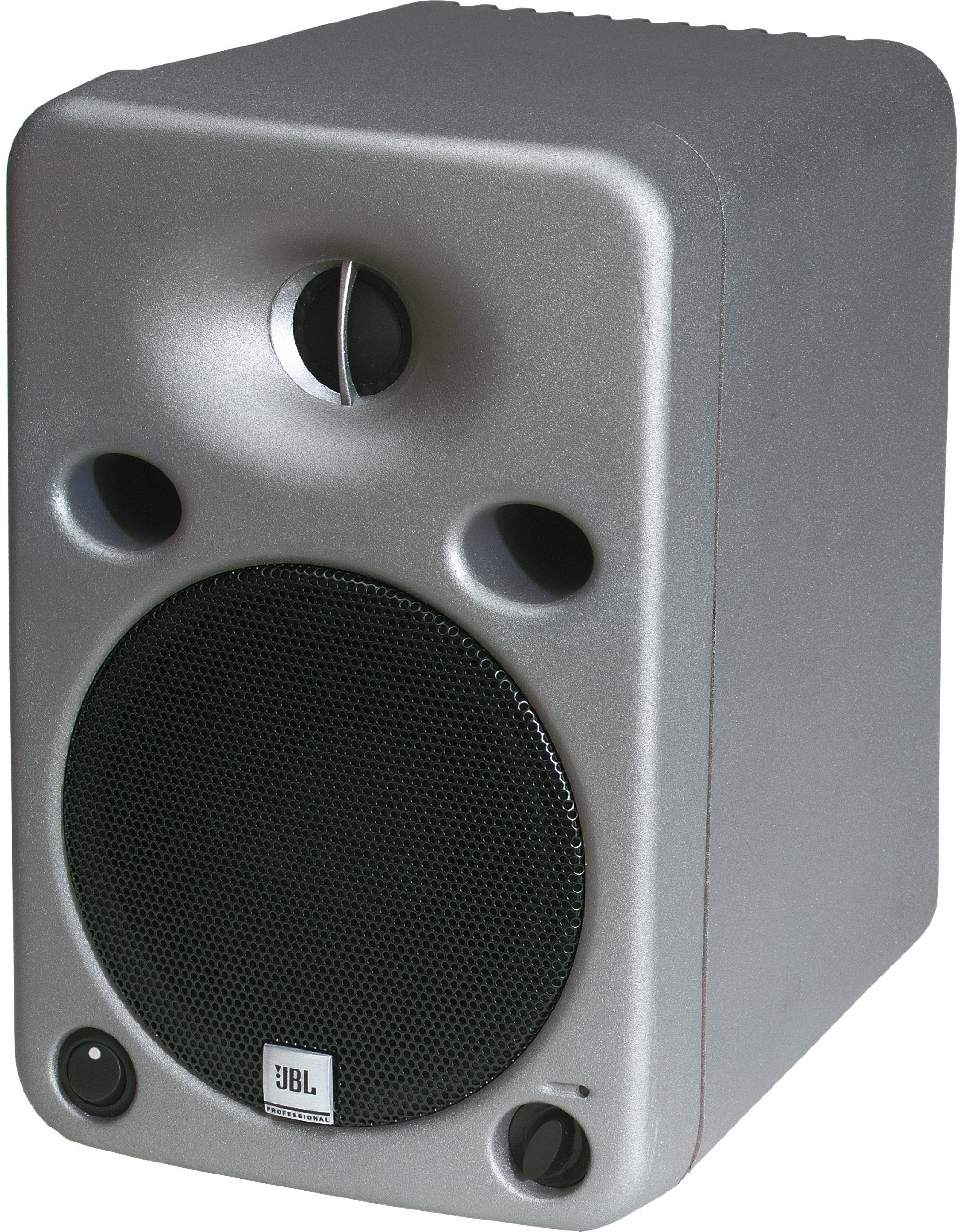
zZounds Gear Experts Say...
5.25 in. woofer. 1 in. Titanium composite diaphragm tweeter.
Overview
The LSR25P Studio Monitor combines JBL's latest in transducer and system technology and incorporates many of the design philosophies of their LSR Studio Monitor Systems. Scaled to provide an extremely accurate reference for workstations, edit suites and small control rooms, the LSR25P.
Features:
5.25 in. woofer
1 in. Titanium composite diaphragm tweeter
Elliptical Oblate Spheroidal (EOS) Waveguide with 50 x 100 degrees dispersion
Bi-amplified design with 100 watts of low frequency power and 50 watts of high frequency power
Front Panel Volume and Power Controls
Integrated mounting points for horizontal or vertical orientation
Shielded for use next to Video Monitors
Built-in high pass for use with optional subwoofer
The LSR Philosophy
The Linear Spatial Reference (LSR) philosophy is based on a set of design goals that carefully control the overall performance of the system in a variety of acoustic spaces. Instead of focusing on a simple measure such as on axis frequency response, LSR designs require much better control over dispersion via transducer selection and crossover frequency design. Critical decisions of image placement, EQ, balance and timbre are typically made within +/-15 degrees vertically and +/-30 degrees horizontally. This workspace is where the engineer, producer and artist make critical mixing decisions and this is the area that LSR is optimized for superb in room response. By incorporating LSR into the system design requirements,… read more placement rules are relaxed, a more stable stereo image is maintained and off axis coloration is minimized. read less
Features:
5.25 in. woofer
1 in. Titanium composite diaphragm tweeter
Elliptical Oblate Spheroidal (EOS) Waveguide with 50 x 100 degrees dispersion
Bi-amplified design with 100 watts of low frequency power and 50 watts of high frequency power
Front Panel Volume and Power Controls
Integrated mounting points for horizontal or vertical orientation
Shielded for use next to Video Monitors
Built-in high pass for use with optional subwoofer
The LSR Philosophy
The Linear Spatial Reference (LSR) philosophy is based on a set of design goals that carefully control the overall performance of the system in a variety of acoustic spaces. Instead of focusing on a simple measure such as on axis frequency response, LSR designs require much better control over dispersion via transducer selection and crossover frequency design. Critical decisions of image placement, EQ, balance and timbre are typically made within +/-15 degrees vertically and +/-30 degrees horizontally. This workspace is where the engineer, producer and artist make critical mixing decisions and this is the area that LSR is optimized for superb in room response. By incorporating LSR into the system design requirements,… read more placement rules are relaxed, a more stable stereo image is maintained and off axis coloration is minimized. read less
Specs
Frequency Response (+1, -2 dB): 70 Hz - 20kHz
Low Frequency Extension: -3 dB: 65 Hz, -6 dB: 56 Hz, -10 dB: 48 Hz (User controls set to default)
Crossover Frequency: 2.3 kHz, 4th-Order Electroacoustic Linkwitz-Riley
Input Connectors: XLR Balanced (+4 dBu), RCA unbalanced (-10 dBV)
User Controls: High frequency control, workstation boundary compensation, low frequency alignment, 80 Hz high pass filter (for use with subwoofer)
Variable Input Attenuation: 0 to 26 dB
Low Frequency Transducer: 134 mm (5.25 in.) diameter, 38 mm (1.5 in.) diameter voice coil, Ferrite magnet with Integral Shielding, Tempered Paper cone with Butyl Rubber Surround, 8 ohms impedance
High Frequency Transducer: 25 mm (1 in.) diaphragm, 25 mm (1 in.) diameter voice coil, Ferrite magnet with Integral Shielding, Damped Titanium Composite diaphragm, 4 ohms impedance
High Frequency Waveguide: Elliptical Oblate Spheroidal (EOS) Waveguide, 50 x 100 degrees dispersion
Low Frequency Amplifier: Bridged Class A-B Monolithic, 100 Watts Sine Wave Rating (<0.1% THD into rated impedance), THD+N < 0.05% (1/2 power)
High Frequency Amplifier: Class A-B Monolithic, 50 Watts Sine Wave Rating (< 0.1% THD into rated impedance), THD+N < 0.05% (1/2 power)
Baffle and Cabinet Material/Finish: Powder Coat Diecast Aluminum
AC Input Voltage: 115/230 VAC, 50/60 Hz (User Selectable)
Net Weight: 7.7 kg (17 lbs.)
Dimensions (WxHxD): 17.3 x 26.9 x 24.1 cm (6.8 x 10.6 x 9.5 in)
Low Frequency Extension: -3 dB: 65 Hz, -6 dB: 56 Hz, -10 dB: 48 Hz (User controls set to default)
Crossover Frequency: 2.3 kHz, 4th-Order Electroacoustic Linkwitz-Riley
Input Connectors: XLR Balanced (+4 dBu), RCA unbalanced (-10 dBV)
User Controls: High frequency control, workstation boundary compensation, low frequency alignment, 80 Hz high pass filter (for use with subwoofer)
Variable Input Attenuation: 0 to 26 dB
Low Frequency Transducer: 134 mm (5.25 in.) diameter, 38 mm (1.5 in.) diameter voice coil, Ferrite magnet with Integral Shielding, Tempered Paper cone with Butyl Rubber Surround, 8 ohms impedance
High Frequency Transducer: 25 mm (1 in.) diaphragm, 25 mm (1 in.) diameter voice coil, Ferrite magnet with Integral Shielding, Damped Titanium Composite diaphragm, 4 ohms impedance
High Frequency Waveguide: Elliptical Oblate Spheroidal (EOS) Waveguide, 50 x 100 degrees dispersion
Low Frequency Amplifier: Bridged Class A-B Monolithic, 100 Watts Sine Wave Rating (<0.1% THD into rated impedance), THD+N < 0.05% (1/2 power)
High Frequency Amplifier: Class A-B Monolithic, 50 Watts Sine Wave Rating (< 0.1% THD into rated impedance), THD+N < 0.05% (1/2 power)
Baffle and Cabinet Material/Finish: Powder Coat Diecast Aluminum
AC Input Voltage: 115/230 VAC, 50/60 Hz (User Selectable)
Net Weight: 7.7 kg (17 lbs.)
Dimensions (WxHxD): 17.3 x 26.9 x 24.1 cm (6.8 x 10.6 x 9.5 in)
Documents and Manuals
For support or warranty questions, please contact the manufacturer:
Phone: 800-336-4525
Web: https://jblpro.com/en/support for pro audio, https://support.jbl.com for consumer/home audio
Phone: 800-336-4525
Web: https://jblpro.com/en/support for pro audio, https://support.jbl.com for consumer/home audio
Reviews
Reviewers gave this product an overall rating of 4.5 out of 5 stars.
(25 ratings)
Submitted May 31, 2005 by a customer from comcast.net
"They are great little speakers."
Verified Customer
zZounds has verified that this reviewer made a purchase from us.
I have used these a lot but I do not trust them like I did my old speakers. They sound great. I mean amazing for little speakers. They have great bass response. I am just afraid there is no apparent quirk that I can work with. Sounds crazy but I think I am supposed to do more work to test my mix.
Sound
They sound great and the music has been fairly portable without a lot of compensation.
Features
They sound good. They have a notched volume knob that help if you need to turn down from the speakers.
Quality
I have had them for several years and never had a problem.
Value
I think they are solid and well made and sound good
Manufacturer Support
No idea never needed any.
The Wow Factor
I want lots of things. I got this so I don't know
Musical Background:
20 years of playing and recording. Run a small studio as a sideline
Musical Style:
Rock, jazz and hard rock almost heavy.
5 of 6 people (83%) people found this review helpful. Did you?
Thanks for your opinion!
No longer available at zZounds
This is a carousel with product cards. Use the previous and next buttons to navigate.


